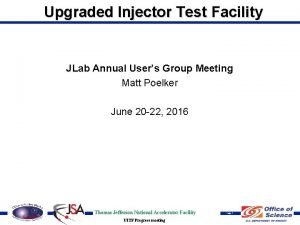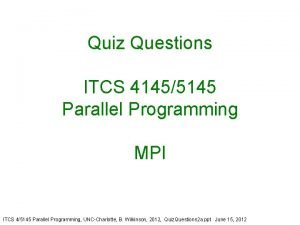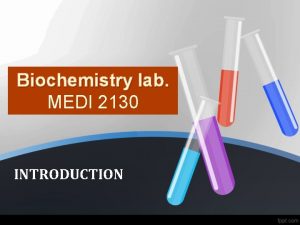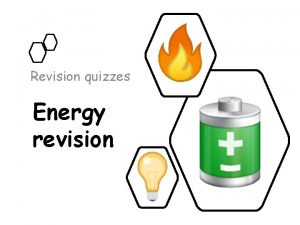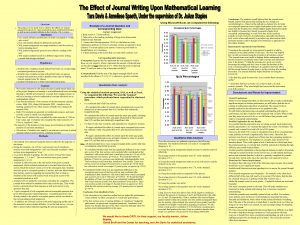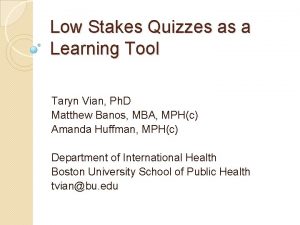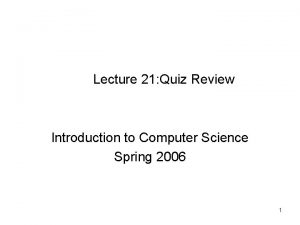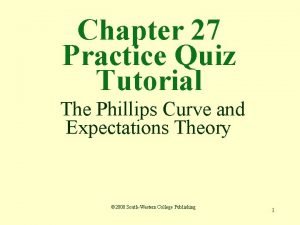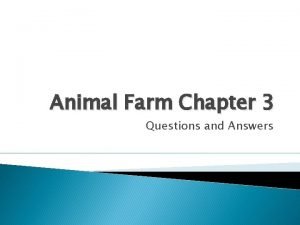Chapter 1 Introduction Quiz 1 On Canvas Quizzes




























































- Slides: 60

Chapter 1 Introduction




Quiz 1 • On Canvas – • Quizzes • Quiz 1

Population and Food Production • Increasing population needing to be fed will fuel interest in finding and developing new practices to improve food production • Interest in improved soil nutrient management today as world population grows

World Population

World Food • Current world food supplies are estimated to be more than adequate at about 2, 500 to 3, 000 calories per day person. • Nonetheless, hunger is still quite common in developing countries because of the lack of resources to purchase and/or redistribute available foodstuffs.

Ability of the Soil to Supply • One important fact remains--soils have finite reserves of the nutrient elements essential for plant growth. • As these nutrients become depleted, by crops that are harvested and shipped for use in other regions, crop yields and food supplies ultimately decrease. • Loss of plant nutrient elements from the soil cannot be overcome by genetically engineered new varieties, different tillage systems, new pesticides or more water. • When soil nutrient depletion occurs, it will be important to identify which of the 13 plant food elements supplied through the soil are deficient, and how to most effectively correct the deficiency.

Does soil nutrient management impact the environment? • Concern for protecting, maintaining, and improving the environment is a luxury only affluent societies can afford to act upon. • Soil erosion and sedimentation in the US increased several fold when the more than 100 million acres that are now farmland were first converted from forest and native grass by cultivation. • IOWA 3 lbs soil lost/1 lb corn grain produced • Greatest concern has been for the impact of excess nutrients in the environment, particularly nitrate-nitrogen (NO 3 -N) in excess of 10 ppm in drinking water, and water-soluble phosphate levels that promote algae growth in surface water. • The challenge in nutrient management is to provide adequate, but not excessive, availability of nutrients to achieve the yield (food crops), growth rate (turf), and appearance (ornamentals) of plants we manage.

What is our general knowledge of nutrient management? • Water, the sole nutrient • An Englishman, van Helmont (1577 -1644), planted a 5 -pound willow tree in a pot containing 200 pounds of soil. After five years he found the tree weighted about 170 pounds and the soil still weighted about 200 pounds. Quite naturally, he concluded that plants obtained their nutrients from water (since that was the only thing he had added in the five years). • Earth for plants • Jethro Tull (1674 -1741) observed that plants grew better if the soil they were growing in was “pulverized”. He is credited with the invention of the cultivator and grain drill. Observing that plants grew better in cultivated soil, he concluded the benefit of cultivation was to pulverize the soil and make it a “pabulum for the lacteal mouths of roots”. His conclusion was wrong, since we now know plants do not ingest soil particles, but his contribution of the cultivator and drill were significant.

Air, water, and elements from soil. • Justis von Liebig (1803 -1873) “Father of agricultural chemistry”, is credited with correctly concluding that plants obtained their carbon (C) from carbon dioxide (CO 2) in the atmosphere and hydrogen (H) and oxygen (O) from water (H 2 O). • Suggested that phosphorus (P) was necessary for seed formation and that alkaline metal elements were necessary to neutralize plant acids. • Incorrectly promoted the notion that plants absorb all the ions in soil water indiscriminately and excrete what they don’t need. We now know that plants preferentially absorb needed ions, but not at the complete exclusion of unnecessary ions.

Law of the Minimum • von Liebig postulated that the yield of a plant would be directly proportional to the most limiting growth factor, even if several other growth factors might be limiting to a lesser degree. His “Law of the Minimum” = water barrel made up of different length barrel staves. Each stave represents the existing level of a growth factor, such as light, heat, nutrients, etc. The level of water in the barrel (yield) is limited to the height of the shortest barrel stave (most limiting growth factor). Father of Agricultural Chemistry SCIENCE-WORLD

Agricultural Experiment Stations • Earliest effort to maintain a “field laboratory” for the purpose of conducting scientific research to improve our understanding of how plants grow and interact with the soil occurred in England in 1843 with the establishment of the Rothamsted Experiment Station. (Rothamsted Farms) • Two scientists, Lawes and Gilbert are credited with this effort. They concluded from some of their work that plants needed both phosphorus (P) and potassium (K), and that non-legumes needed nitrogen (N). They showed that the benefit of fallow (cultivating, but not growing a crop for one season) was from improved N availability and that soil fertility could be maintained by addition of chemical fertilizers. • Rothamsted Sustainability • In 1862, shortly after the Rothamsted station was started, the US congress passed the Morrill Act and established the Department of Agriculture. This legislation provided for Land Grant Universities in every state. These universities, and the associated agricultural experiment stations, were instrumental in the continued search for, and improved understanding of, soil fertility. • Magruder Plots, 1892 -present, Oldest Long-term Continuous Winter Wheat Experiment

How do plants respond to growth factors? • Initially there is little growth as the plant is in the seedling stage and largely dependent on nutrition from reserves in the seed. As leaves develop and capacity to capture sunlight and photosynthesis increases, there is a rapid increase in growth or biomass. Growth diminishes as the plant enters the reproductive phase and begins seed development, stopping with full maturity. Growth (G) may be expressed as a function of each growth factor (x) by • G = f (x 1, x 2, x 3, …. . , xn) [1] Growth

N Uptake • How much N is accumulated at V 10 in corn? F 5 in winter wheat? • http: //www. nue. okstate. edu/Nitrogen_Uptake. htm

How do plants respond to growth factors? • If the precise cause and effect relationship of each growth factor is known, then the growth response to each factor can be mathematically predicted. These mathematical expressions, or models, can be useful in management of plants when the growth factors can be controlled. • Use of fertilizers is an example of how we might manage nutrients as a growth factor, and in turn, plant growth.

How do growth factors interact? • Whenever a growth factor is limiting, it lessens the plant’s need for other growth factors. • Example: when cool weather limits plant growth there is less demand by the plant for nutrients and water. • Whenever two or more growth factors are limiting and one of these is input at an adequate level there will be increased demand for the other growth factors

Growth Factors • When a limiting growth factor, such as water, is removed by installing an irrigation system it will generally improve plant response to fertilizer used to correct nutrient deficiencies that are also limiting growth

Useful models for nutrient management? • German scientist Mitscherlich, and the US scientist Bray. • Mitscherlich law of diminishing returns. • In 1906, E. A. Mitscherlich published work showing yields diminished more with each added increment of a growth-limiting factor. Mitscherlich expressed the relationship mathematically as • dy/dx = (A - y) c • Where: • 1. dy/dx is the change in yield y 1 from an increment (x) addition of a single limiting growth factor, or nutrient. • 2. A is the maximum yield when all growth factors are at their optimum. • 3. y is the yield initially or from the last addition of the limiting nutrient. • 4. c is a proportionally constant or efficiency factor.

Mitscherlich • If a growth factor is deficient (not necessarily the most limiting as identified in Liebig’s “Law of the Minimum”), increasing the level of the growth factor present can increase yield. • The yield increase will be proportional to the difference between maximum yield obtained by adding the growth factor and yield at the given level of the growth factor. • When the deficient growth factor is first added, the difference in yield without any deficiency (A) and yield (y) supported by the current level of the growth factor is at its largest value.

Law of Diminishing Returns • Because the crop response was always less from each successive increment of growth factor, the relationship was also referred to as the “Law of diminishing returns”. • If a growth factor is limiting, growth response will be greatest for the first increment added and least for the last increment added. • This is not unlike our response to satisfying a hunger for ice cream or a thirst for water. The first spoonful of ice cream or swallow of water will usually be the most satisfying. Each additional spoonful of ice cream or swallow of water will be less satisfying than the previous, until at last there is no satisfaction from additional ice cream or water.

Mitscherlich • Researchers found that the Mitscherlich response could be used to describe yield, at any deficient level of a growth factor, as a percentage of the maximum yield possible. When this is done, the level of the deficient growth factor can be expressed as a percent sufficiency level

Mitscherlich • Without any external inputs of the growth factor x, the yield is about 50 % of • • • maximum. Whatever the level of the growth factor when it is present at the x 0 amount, it is only about 50 % sufficient. The x 1 level of growth factor is about 70 % sufficient The x 2 level of growth factor is about 80 % sufficient The x 3 level of growth factor is about 85 % sufficient “Diminishing returns” the increase in each percentage sufficiency results in smaller and smaller increases in yield (e. g. 20, 10, and 5) Mitscherlich response model is also referred to as the “Percent Sufficiency Response” or more commonly as the “Percent Sufficiency Concept”. For immobile nutrients

How does the Mitscherlich Sufficiency Concept work in practice? • An example of how the Mitscherlich Sufficiency Concept is applied to plant growth-nutrient management situations is illustrated by considering the following hypothetical data for wheat grain yields as influenced by available soil phosphorus (P). • Soil test P (STP) is expressed as pp 2 m, which is approximately equal to pounds per acre, and yield is in units of bushels per acre. Relationship of wheat grain yield, soil test P and percent sufficiency of soil P. How can 0 pp 2 m be 25% sufficient?

How does this help in the “real world”? • By using this relationship of soil test P and percent sufficiency of soil P, we can estimate the impact of growing plants in a P deficient environment if we have some reliable estimate of maximum yield. • Most experienced crop or plant managers have some knowledge of what a realistic yield goal or yield maximum for the growing environment should be. • If the yield maximum is 50 bu/acre and the soil test P is 30, then the yield without added P will be 85 % of 50, or 42. 5 bu/acre (soil test P of 30 is 85 % sufficient).

Bray “Nutrient Mobility Concept • In 1954, the US scientist Bray proposed that plant response to availability of soil nutrients should be strongly influenced by how easily the nutrient is moved with water in the soil. • He considered nutrients as relatively mobile or immobile in the soil. • On that basis, he stated that as the mobility of a nutrient in soil decreases the amount needed in the soil increases from a value equal to the product of maximum yield and optimum plant composition to a constant. • In other words, for a nutrient that is 100% mobile the amount required is simply a product of yield and plant composition.

Bray “Nutrient Mobility Concept • Bray’s mobility concept was a combination of the Mitscherlich percent sufficiency concept and Liebig’s Law of the Minimum. • Bray showed that Liebig’s Law of the Minimum concept applied for mobile nutrients like NO 3 -N, and that Mitscherlich’s percent sufficiency concept worked for immobile nutrients like P and K. • In Liebig’s theory of plant response, if all nutrients were adequate except one (only one short stave in the barrel), then yield would increase in direct proportion to increasing the availability of the deficient nutrient (straight-line response).

Bray “Nutrient Mobility Concept • Bray illustrated the difference in how plants extracted mobile and immobile nutrients from the soil by showing that mobile nutrients would be extracted from a large volume of soil (root system sorption zone) and immobile nutrients from a much smaller volume of soil (root surface sorption zone).

Bray • Bray’s concept of how plants responded to soil nutrient availability could be represented as a straight-line response for a nutrient that is 100% mobile in the soil and a curvilinear response for relatively immobile nutrients • Complete mobility probably does not exist in soils, except for water itself, which is an important consideration.

How does Bray’s concept apply in practice? • When plants are grown close together, as in an intensive agriculture, it becomes clear that the volumes of soil that each plant extracts mobile nutrients from may overlap while soil volumes supplying immobile nutrients for plants do not

Distance, cm 35 45 84 99 137


http: //www. nue. okstate. edu/Spatial_N_Variability. htm

Long term N-P-K Experiments (1969 -2004)

Impact of among-plant competition for mobile nutrients • Plants will compete among each other for mobile nutrients if they are spaced close enough together. • As cropping systems increase yield by planting more densely, there will be a direct increase in demand by the crop for the mobile nutrient(s). • if both plants are going to grow normally it will be necessary to add more of the mobile nutrient to eliminate the competition among plants.

Impact of among-plant competition for immobile nutrients • When plants are growing close togethere is no competition among plants for extracting immobile nutrients from the soil. This is because the plant root is extracting immobile nutrients from an extremely small volume of soil, often only the soil within a millimeter or two from the root surface. • As plants grow, they obtain additional supplies of an immobile nutrient by developing more roots that will explore new volumes of soil. However, even with a large number of hair-roots developing for each plant, there is seldom found any common soil volume being explored by hair-roots of adjacent plants. • Immobile nutrients are extracted from only a fraction of the total surface soil volume. • If a soil is 100 % sufficient in supplying an immobile nutrient for a dry-land crop yield goal of 60 bushels corn per acre, then it will also be 100 % sufficient if the field is irrigated and the yield goal can be increased to 180 bushels per acre. • Sufficiency: INDEPENDENT OF YIELD LEVEL

Combined effects of mobile and immobile nutrient deficiencies • The most limiting of the mobile nutrients will determine the maximum possible yield (as in Liebig’s “Law of the Minimum”). • Deficiencies of immobile nutrients reduce the potential yield of a site, or field, by a “percent sufficiency” factor, and identify the ultimate potential yield. • In non-irrigated production systems, water is usually the most limiting mobile nutrient (hydrogen) source. • Environment will support a yield of 5 ton per acre of forage and all nutrients are adequate except one mobile nutrient and one immobile nutrient. • If the amount of mobile nutrient present will only support a yield of 3 ton, then 3 ton per acre becomes the maximum possible yield. • If the immobile nutrient were present at a 75 % sufficiency level then the “adjusted” (both nutrients deficient) maximum possible yield would be only 75 % of 3 ton, or 2. 25 ton. • Correcting only the mobile nutrient deficiency would raise the possible yield to 3. 75 ton (5 ton x 0. 75) and correcting only the immobile nutrient deficiency would raise the possible yield to 3 ton (3 ton x 1. 00).

• When two immobile nutrients are deficient, the expected yield will be the product of their percent sufficiencies times the maximum possible yield. • Example, if one immobile nutrient is 90 % sufficient and another is 80 % sufficient, their combined effect will be that the expected yield will be 72 % (. 90 x. 80) of the maximum possible yield. • If one is 70% sufficient, and another 50% • Expected YIELD =

What evidence do we have that the mobility concept works? • Natural distribution of plants in relation to availability of the mobile nutrient water, as influenced by annual rainfall. • Desert environment: sparse spacing, plants will not compete for available water even in the driest years. • The volume of soil that receives, stores and then provides water for plants is relatively large for each plant because this volume is only occasionally refilled (rain is scarce) • Tropical environment: dense spacing, water not limiting • Volume of soil serving each plant is refilled frequently (rains often), & does not need to be very large.

Desert Plant Competition

Tropical Plants

What can we infer from the mobility concept? • Mobile and immobile nutrients must be managed differently. • Requirement for mobile nutrients is directly related to yield (or growth rate). • Requirement for immobile nutrients is related to the concentration at the root surface, and not related to yield goal. • In-season deficiencies of mobile nutrients can be corrected by soil addition, • In-season fertilization of immobile nutrient is usually of no benefit. • Availability of mobile nutrients, in the root system sorption zone (or bulk soil), changes dramatically during the growing season and from one season to another depending on the balance between external nutrient input (fertilization) and yield (harvest).

What can we infer from the mobility concept? • Soil availability of immobile nutrients, in the bulk soil, is relatively constant during and among seasons (e. g. soil test values for immobile nutrients should not change much from one year to the next, whereas soil test values for mobile nutrients may change greatly from one year to the next. ). • Mobile nutrients may be lost by leaching in high rainfall environments • Leaching has little impact on availability of immobile nutrients. • Accurate assessment of soil supply of mobile nutrients must include surface and subsoil measurement. • Availability of immobile nutrients in the subsoil is of little value in meeting crop needs. • Plant response to fertilizer additions of immobile nutrients will be maximized by placing the fertilizer where roots will be growing.

Models used to describe yield response to nutrients • Models used by scientists and general agronomists today are often simple • • mathematical expressions of yield in relation to nutrient availability, but may also be very complex. Simple models are created using correlation-regression analysis that results in output of a regression equation, or model. Examples of these models are illustrated by considering simple linear and polynomial models. Linear response model? The linear response is described by the general expression y = a + bx where y is yield a is a constant (y-intercept) b is the slope of the line x is the level of nutrient input

Polynomial models have two or more terms where a constant (like the slope in the linear model) is multiplied times the value representing the level of available nutrient. y = a + b 1 x + b 2 x 2 • Terms similar to those defined for the linear model. • Two coefficients (b 1 and b 2). • Coefficients describe the slope of the line, which is not constant, but instead changes with change in the value of x. The magnitude of the value for b 1 identifies how strong yield responds linearly to the nutrient

Importance of crop response models Help identify the potential yield for a particular crop and location How much of specific nutrient might be required to support that yield. 40 bushels/acre wheat grain can be produced with 80 pounds/acre. Average yield without N fertilizer is about 25 bushels/acre, so the addition of 80 pounds of N fertilizer is associated with increasing yield by 15 bushels/acre. • Realistic costs for N are about $0. 50/lb and wheat has a value of at least $6. 00/bushel. Thus, for a cost of $40. 00 for N (80 lb x $0. 50/lb) there is an increase in crop value of $90. 00 (15 bushels x $6. 00/bushel). 10 yrs ago $16 and $45. • These ASSUME all other growth factors are at a constant or non-limiting, and do not consider 2 simultaneously • •

Nutrient interaction responses • When one growth factor is supplied at a higher level, it influences how plants will respond to a second, limiting growth factor. • Plants supplied with more water responded to fertilizer differently. • Interaction between two nutrients may be either positive or negative. • Sometimes the addition of the two nutrients has no interactive effect. • General polynomial expression to identify interaction responses for N and P may be given as • y = a + b 1 N + b 2 P + b 3 NP • where y is yield, a is the y-intercept, b 1, 2, 3 are coefficients describing the magnitude of response from associated inputs of N, P, and the interactive effect (NP) of N and P.


• Yield response to N and P when there is no Nx. P interaction

Yield response to N and P when there is a positive Nx. P interaction

Yield response to N and P when there is a negative Nx. P interaction

Summary • Management of soil nutrients required by plants is important because plants are the foundation of our food supply. • Projected doubling of world population in the next 50 years will double the demand for a barely adequate food supply. • Depletion of soil nutrients by food harvesting will need to be replenished from external sources (fertilizers) by ever increasing amounts. • Understanding how plants respond to soil nutrient deficiencies and the input of fertilizer forms will be critical to efficient food production and minimizing its impact on the environment.

Movement of Nutrients to the Roots • Mass Flow • Diffusion • Contact Exchange? (Root Interception) • UMN Presentation http: //www. soils. umn. edu/academics/classes/soil 3416/lectur e 3. htm Monocots versus dicots

Mass Flow • Nutrients in soil solution move to the roots, driven mostly by plant transpiration • Mechanism is considered movement to roots by mass flow. In some cases, this is an adequate explanation for all the plants requirements of nutrients. • Mass flow to roots is driven by plant transpiration, however, mass flow is not a major pathway of P movement to plants.

Diffusion - the flow from higher to lower concentrations Ficks Law of diffusion D is the diffusion constant SI unit m 2 s-1

Examples of Diffusion: • Drop of ink in water • Perfume diffusing across room.


Root Interception • Roots occupy 1 -3% of the soil volume of the root zone. By this mechanism, plants are thought to take up nutrients that they encounter as roots grow into unexplored soil volume. • In truth, plant roots grow in the voids between soil particles, either avoiding the solids or pushing them aside, and plants take up nutrients from solution rather than from solids.

Summary • Available soil nutrients are most commonly under the control of farmers, crop production managers, and other non-food plant managers. • Plant response to correcting deficient soil nutrients can be generally described by considering whether nutrients are mobile or immobile in the soil. • Mobile soil nutrients, like water, impose the first limit to plant growth. • Maximum crop yield is determined by the most limiting of any deficient mobile nutrients. • Deficiencies of immobile nutrients impose a secondary yield limit as a percentage of the maximum yield possible. • The ease with which computers have allowed evaluation of how crops respond to changing levels of nutrients and other growth factors, has led to the generation of many types of models, or mathematical expressions describing the responses. These models help managers estimate yield potential and the degree to which their crop may respond to increases in nutrient input.
 Introduction to java programming 10th edition quizzes
Introduction to java programming 10th edition quizzes Frankenstein quizzes by chapter
Frankenstein quizzes by chapter Lean model canvas vs business model canvas
Lean model canvas vs business model canvas Jlab quizzes
Jlab quizzes Mpi quizzes
Mpi quizzes Fft quizzes
Fft quizzes Chapter 1 reading quiz question 6
Chapter 1 reading quiz question 6 Quizzes
Quizzes Dirty mind test
Dirty mind test Https://www.tate.org.uk/kids/games-quizzes/street-art
Https://www.tate.org.uk/kids/games-quizzes/street-art 8 types of energy
8 types of energy Quizzes
Quizzes Weighfair
Weighfair Quizzes for students
Quizzes for students Holes questions chapter 1-5
Holes questions chapter 1-5 Quizzes
Quizzes Quizzes
Quizzes Sparc quiz answers
Sparc quiz answers Moodle quizzes
Moodle quizzes Coriolis effect
Coriolis effect Quizzes
Quizzes Quizzes
Quizzes The odyssey quizzes
The odyssey quizzes Happy monday quiz
Happy monday quiz Physics 241 purdue
Physics 241 purdue Convert fraction to decimal
Convert fraction to decimal Quizzes
Quizzes Quizzes
Quizzes What is inductive reasoning
What is inductive reasoning Inductive vs deductive
Inductive vs deductive Chapter 9 chemical names and formulas chapter quiz answers
Chapter 9 chemical names and formulas chapter quiz answers Introduction to power tools quiz
Introduction to power tools quiz Introduction to database quiz
Introduction to database quiz 2-6 the quadratic formula
2-6 the quadratic formula Kuis pengantar manajemen
Kuis pengantar manajemen Homers epic poem
Homers epic poem Damodaran beta
Damodaran beta Introduction to computer science quiz
Introduction to computer science quiz Quiz master introduction
Quiz master introduction Body paragraph
Body paragraph The great gatsby 4-6 quiz
The great gatsby 4-6 quiz What game does dill invent
What game does dill invent How to kill a mockingbird summary chapter 1
How to kill a mockingbird summary chapter 1 The outsiders chapter 9
The outsiders chapter 9 The great gatsby chapter 1 quiz
The great gatsby chapter 1 quiz The great gatsby chapter 3 questions and answers
The great gatsby chapter 3 questions and answers Lord of the flies chapter 5-7 quiz
Lord of the flies chapter 5-7 quiz Daniel chapter 5 questions and answers
Daniel chapter 5 questions and answers Chapter 6 quiz 1 geometry answers
Chapter 6 quiz 1 geometry answers Fire service communications
Fire service communications Ap statistics chapter 27 quiz
Ap statistics chapter 27 quiz Chapter 12 quiz it essentials
Chapter 12 quiz it essentials It essentials chapter 11
It essentials chapter 11 Lesson 1 your total health
Lesson 1 your total health Animal farm comprehension questions and answers
Animal farm comprehension questions and answers 1984 book one quiz
1984 book one quiz To kill a mockingbird quiz
To kill a mockingbird quiz To kill a mockingbird chapter 1 quiz
To kill a mockingbird chapter 1 quiz Chapter 23 to kill a mockingbird
Chapter 23 to kill a mockingbird The outsiders chapter 1 questions and answers
The outsiders chapter 1 questions and answers Teamwork problem solving
Teamwork problem solving



